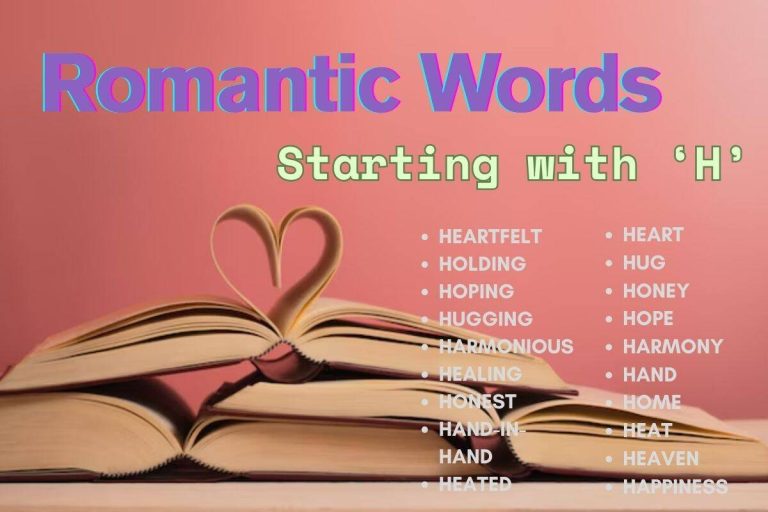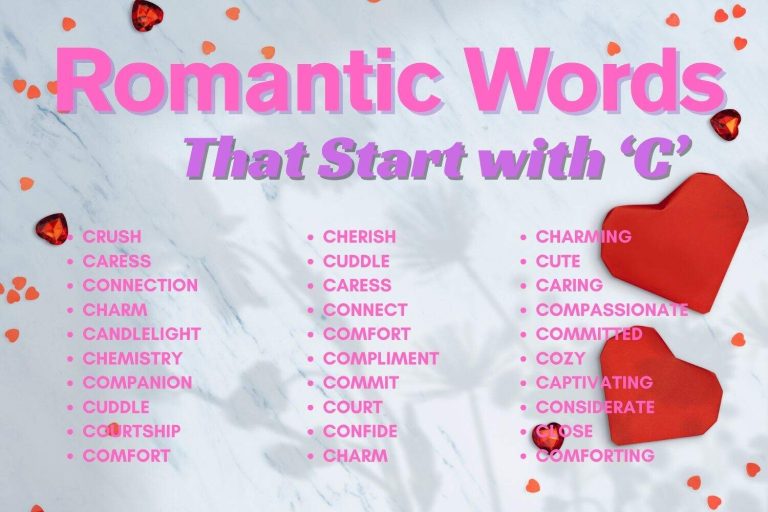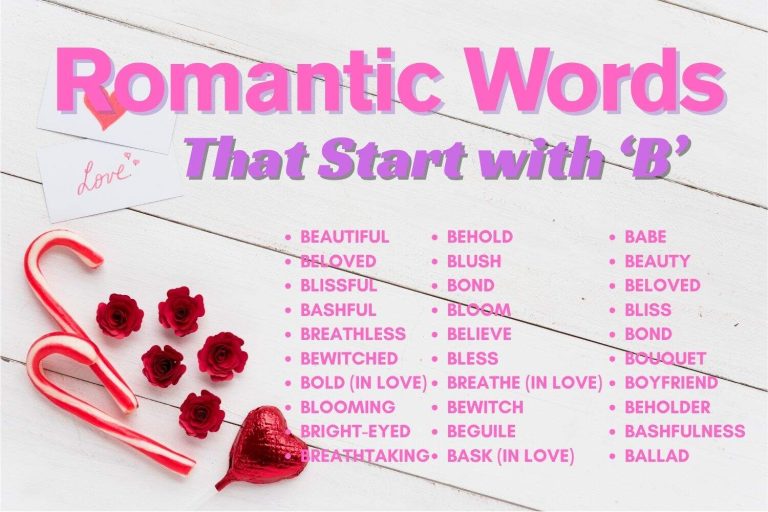Oxymoron vs. Antithesis: Understanding the Difference
Oxymorons and antitheses are powerful rhetorical devices that add depth and intrigue to language. While both involve contrasting elements, they operate in distinct ways.
Understanding the nuances between them is crucial for effective writing and communication. This article provides a comprehensive guide to differentiating oxymorons and antitheses, exploring their definitions, structures, examples, and usage rules.
Whether you’re a student, writer, or language enthusiast, this guide will equip you with the knowledge to master these figures of speech and enhance your expressive abilities.
This guide is structured to help learners of all levels grasp the concepts of oxymoron and antithesis. We begin with clear definitions and structural breakdowns, followed by extensive examples to illustrate their applications.
We then delve into usage rules, common mistakes, and practice exercises to solidify your understanding. Finally, we address advanced topics and frequently asked questions to provide a complete learning experience.
Definition: Oxymoron and Antithesis
An oxymoron is a figure of speech that combines two contradictory terms. It creates a paradoxical effect, often used for emphasis, humor, or to reveal a deeper truth. The contradiction is usually apparent on the surface, inviting the reader to consider the underlying meaning.
Antithesis, on the other hand, is a rhetorical device that presents two contrasting ideas in a balanced or parallel structure. It emphasizes the opposition between the ideas, creating a strong and memorable effect. Antithesis is often used to highlight a conflict or to present different perspectives on a subject.
In essence, an oxymoron is a contradiction in terms, while antithesis is a contrast in ideas expressed in parallel structure. Both are effective tools for adding complexity and impact to writing, but they achieve this through different mechanisms.

Structural Breakdown
Oxymoron Structure
The structure of an oxymoron is relatively simple. It typically consists of two words that have opposite meanings.
These words are usually placed next to each other, creating an immediate sense of contradiction. The structure can be an adjective followed by a noun (e.g., “cruel kindness”) or an adverb followed by an adjective (e.g., “awfully good”).
The key to an effective oxymoron is the juxtaposition of these opposing terms. This creates a tension that forces the reader to pause and consider the deeper meaning.
The apparent contradiction often reveals a hidden truth or a more complex understanding of the subject.
Antithesis Structure
Antithesis involves a more complex structure than oxymoron. It requires two contrasting ideas to be presented in a parallel grammatical structure.
This parallelism helps to emphasize the contrast between the ideas and creates a balanced and memorable effect. The parallel structure often involves repeating grammatical patterns, such as using the same verb tense or sentence structure for both parts of the antithesis.
For example, consider the famous line from Charles Dickens’ *A Tale of Two Cities*: “It was the best of times, it was the worst of times.” The parallel structure of “It was the…” is repeated, emphasizing the contrast between “best” and “worst.” This structure is crucial for the effectiveness of antithesis, as it highlights the opposition and creates a sense of balance.
Types and Categories
Types of Oxymoron
While the basic structure of an oxymoron is simple, there are subtle variations in how it can be used. Oxymorons can be categorized based on the type of contradiction they present.
- Adjective-Noun Oxymorons: These are the most common type, where an adjective modifies a noun with an opposing meaning (e.g., “living dead”).
- Adverb-Adjective Oxymorons: Here, an adverb modifies an adjective with a contradictory meaning (e.g., “terribly good”).
- Implied Oxymorons: These are less direct, where the contradiction is implied rather than explicitly stated. For example, saying someone is “conspicuously absent” implies a contradiction because absence is usually not conspicuous.
The choice of which type of oxymoron to use depends on the desired effect. Adjective-noun oxymorons are often used for direct and impactful contradictions, while implied oxymorons can create a more subtle and nuanced effect.
Categories of Antithesis
Antithesis can be categorized based on the type of contrast it presents and the way it is structured.
- Direct Antithesis: This involves a direct opposition of ideas, where the two parts of the antithesis are clearly contradictory (e.g., “Give me liberty, or give me death”).
- Indirect Antithesis: This presents a more subtle contrast, where the ideas are not directly opposed but create a sense of tension or conflict (e.g., “Man proposes, God disposes”).
- Balanced Antithesis: This type uses a strict parallel structure to emphasize the contrast, often repeating grammatical patterns (e.g., “Easy on the eyes, hard on the heart”).
The choice of category depends on the specific message you want to convey. Direct antithesis is effective for highlighting clear conflicts, while indirect antithesis can be used to explore more nuanced oppositions.
Balanced antithesis creates a strong and memorable effect through its parallel structure.
Examples
Oxymoron Examples
Oxymorons are used extensively in literature, everyday speech, and even advertising to create memorable and thought-provoking expressions. The following table provides a wide range of examples to illustrate their use.
| Oxymoron | Explanation |
|---|---|
| Living dead | Combines the concepts of life and death, suggesting something that is both alive and dead. |
| Deafening silence | Contrasts the loud sound of “deafening” with the absence of sound in “silence.” |
| Cruel kindness | Combines the negative trait of cruelty with the positive trait of kindness, suggesting a paradoxical action. |
| Original copy | Contradicts the idea of an original being unique and a copy being a duplicate. |
| Painfully beautiful | Combines the unpleasant sensation of pain with the aesthetic quality of beauty. |
| Sweet sorrow | Contrasts the positive emotion of sweetness with the negative emotion of sorrow. |
| Dark light | Combines the absence of light (dark) with the presence of light, creating a contradictory image. |
| Clearly confused | Combines the clarity of understanding with the state of being confused. |
| Controlled chaos | Combines the order of control with the disorder of chaos. |
| Awfully good | Combines the negative adverb “awfully” with the positive adjective “good.” |
| Seriously funny | Combines the solemnity of “seriously” with the lightheartedness of “funny.” |
| Small crowd | Combines the idea of a small number with the concept of a crowd, which usually implies a large number. |
| Open secret | Combines the accessibility of being open with the confidentiality of a secret. |
| Virtual reality | Combines the simulated nature of “virtual” with the realness of “reality.” |
| Random order | Combines the unpredictability of random with the structure of order. |
| Silent scream | Combines the absence of sound with the intense expression of a scream. |
| Pretty ugly | Combines the attractiveness of “pretty” with the unattractiveness of “ugly.” |
| Bitter sweet | Combines the contrasting tastes of bitterness and sweetness. |
| Free gift | Combines the idea of being free with the concept of a gift, which usually implies a cost to someone. |
| Peace force | Combines the idea of peace with the force which is often associated with conflict. |
| New tradition | Combines something new, and something that has been around for a long time. |
| Tragic comedy | Combines the tragic, with the comedy. |
| Foolish wisdom | Combines the foolish, with the wisdom. |
| Religious freedom | Combines the religious, with the freedom. |
| Loyal opposition | Combines the loyal, with the opposition. |
| Studied carelessness | Combines the studied, with the carelessness. |
Antithesis Examples
Antithesis is a powerful tool for creating memorable and impactful statements. The following examples demonstrate how antithesis can be used to highlight contrasting ideas and create a sense of balance.
| Antithesis | Explanation |
|---|---|
| “It was the best of times, it was the worst of times.” | Contrasts the positive “best of times” with the negative “worst of times,” highlighting the extremes of the era. |
| “Man proposes, God disposes.” | Contrasts human plans (“man proposes”) with divine intervention (“God disposes”). |
| “Give me liberty, or give me death.” | Contrasts the value of freedom (“liberty”) with the ultimate sacrifice (“death”). |
| “Speech is silver, but silence is golden.” | Contrasts the value of speaking (“speech is silver”) with the greater value of silence (“silence is golden”). |
| “Ask not what your country can do for you – ask what you can do for your country.” | Contrasts the expectation of receiving from one’s country with the responsibility of contributing to it. |
| “To err is human; to forgive, divine.” | Contrasts the human tendency to make mistakes (“to err is human”) with the divine ability to forgive (“to forgive, divine”). |
| “We must learn to live together as brothers or perish together as fools.” | Contrasts the positive outcome of unity (“live together as brothers”) with the negative outcome of division (“perish together as fools”). |
| “Not that I loved Caesar less, but that I loved Rome more.” | Contrasts the speaker’s affection for Caesar with their greater love for Rome. |
| “Better to reign in Hell, than serve in Heav’n.” | Contrasts the power of ruling in Hell with the subservience of serving in Heaven. |
| “They promised freedom, but delivered slavery.” | Contrasts the promise of freedom, with the reality of slavery. |
| “Easy on the eyes, hard on the heart.” | Contrasts physical attractiveness with emotional pain. |
| “Float like a butterfly, sting like a bee.” | Contrasts the gracefulness of a butterfly with the painful sting of a bee. |
| “One small step for man, one giant leap for mankind.” | Contrasts the individual action with the collective achievement. |
| “Money is the root of all evil; poverty is the fruit of all goodness.” | Contrasts the common saying about money with a contrasting view of poverty. |
| “The world will little note, nor long remember what we say here, but it can never forget what they did here.” | Contrasts the fleeting nature of words with the enduring impact of actions. |
| “Many are called, but few are chosen.” | Contrasts the large number of people called with the small number chosen. |
| “Man is born free, but everywhere he is in chains.” | Contrasts the natural state of freedom with the societal constraints. |
| “Give every man thy ear, but few thy voice.” | Contrasts the willingness to listen with the caution in speaking. |
| “We live in deeds, not years; in thoughts, not breaths; in feelings, not in figures on a dial.” | Highlights the importance of actions, thoughts, and feelings over mere existence. |
| “Though studious, he was unlearned; though intelligent, he was ignorant.” | Contrasts effort with outcome, highlighting a disconnect between trying and achieving. |
| “The prodigal robs his heir, the miser robs himself.” | Contrasts the ways in which the prodigal and the miser harm others and themselves. |
| “He has all his life long been lying in bed, but he has traveled all over the world.” | Contrasts physical inactivity with mental exploration. |
| “They make a desert and call it peace.” | Contrasts the destruction of war with the supposed tranquility of peace. |
| “That’s one small step for a man, one giant leap for mankind.” | Neil Armstrong’s quote contrasts the personal achievement with the universal significance. |
| “Love is an ideal thing, marriage a real thing.” | Goethe’s quote contrasts the abstract concept of love with the concrete reality of marriage. |
Usage Rules
Oxymoron Rules
When using oxymorons, it’s essential to ensure that the contradiction is intentional and serves a specific purpose. Avoid using oxymorons that are cliché or overused, as they can lose their impact.
The best oxymorons are fresh and original, creating a unique and thought-provoking effect.
Consider the context in which you are using the oxymoron. It should be appropriate for the tone and style of your writing.
Overusing oxymorons can make your writing seem contrived or unnatural, so use them sparingly and strategically.
Antithesis Rules
The key to effective antithesis is maintaining a parallel structure between the contrasting ideas. This parallelism helps to emphasize the opposition and creates a balanced and memorable effect.
Ensure that the grammatical structure is consistent between the two parts of the antithesis.
The contrasting ideas should be clearly opposed, but not necessarily contradictory. They should present different perspectives or highlight a conflict in a way that is meaningful and insightful.
Avoid using antithesis that is forced or unnatural, as it can detract from the overall impact of your writing.
Like oxymorons, antithesis should be used sparingly and strategically. Overusing antithesis can make your writing seem repetitive or predictable, so use it to emphasize key points or create a dramatic effect.
Common Mistakes
One common mistake is confusing oxymorons with paradoxes. A paradox is a statement that appears contradictory but may contain a deeper truth, while an oxymoron is a combination of contradictory terms.
For example, “Less is more” is a paradox, while “bittersweet” is an oxymoron.
Another common mistake is using antithesis without a clear parallel structure. This can weaken the impact of the contrast and make the writing seem disjointed.
Ensure that the grammatical structure is consistent between the two parts of the antithesis.
A frequent error is using clichés as oxymorons or in antithetical statements. This dilutes their impact and makes the writing seem unoriginal.
Strive to create fresh and insightful expressions.
| Incorrect | Correct | Explanation |
|---|---|---|
| “The party was awfully bad.” (Intended as oxymoron) | “The party was awfully good.” | “Awfully bad” doesn’t create a meaningful contradiction. “Awfully good” creates a paradoxical and humorous effect. |
| “He liked apples, she liked oranges.” (Intended as antithesis) | “He loved apples, she hated oranges.” | The original sentence simply states preferences. The corrected sentence creates a stronger contrast using “loved” and “hated.” |
| “Living the dream.” (Intended as oxymoron) | N/A (This is a common idiom, but not inherently an oxymoron) | While sometimes used sarcastically, “Living the dream” is not a true oxymoron as it doesn’t contain directly contradictory terms. |
| “She was a little bit pregnant.” (Intended as oxymoron) | N/A (This phrase is logically flawed, not an oxymoron) | Pregnancy is binary (either pregnant or not), so “a little bit pregnant” is logically incorrect, not an oxymoron. |
Practice Exercises
Exercise 1: Identifying Oxymorons and Antitheses
Identify whether the following sentences contain an oxymoron, an antithesis, or neither.
| Sentence | Oxymoron | Antithesis | Neither | Answer |
|---|---|---|---|---|
| “The comedian was seriously funny.” | X | Oxymoron | ||
| “It was the best of times, it was the worst of times.” | X | Antithesis | ||
| “She was clearly confused about the directions.” | X | Oxymoron | ||
| “Ask not what your country can do for you – ask what you can do for your country.” | X | Antithesis | ||
| “The food was bittersweet, reminding her of old memories.” | X | Oxymoron | ||
| “He was rich and she was poor.” | X | Antithesis | ||
| “The government had a peace force.” | X | Oxymoron | ||
| “To be or not to be, that is the question.” | Neither | |||
| “The politician was known for his cruel kindness.” | X | Oxymoron | ||
| “He lived to eat, instead of eating to live.” | X | Antithesis |
Exercise 2: Creating Oxymorons and Antitheses
Create your own oxymoron or antithesis based on the following prompts.
| Prompt | Type | Your Answer |
|---|---|---|
| Describe a chaotic situation that is somehow organized. | Oxymoron | Controlled chaos |
| Contrast the benefits of knowledge with the dangers of ignorance. | Antithesis | Knowledge is power; ignorance is bliss. |
| Describe a sound that is both loud and silent. | Oxymoron | Deafening silence |
| Contrast the value of action with the importance of thought. | Antithesis | Think before you act, but act before it’s too late to think. |
| Describe something that is both beautiful and painful. | Oxymoron | Painfully beautiful |
| Contrast the rewards of hard work with the consequences of laziness. | Antithesis | Diligence leads to success, sloth leads to ruin. |
| Describe a secret that is known to everyone. | Oxymoron | Open secret |
| Contrast the concept of freedom with the reality of captivity. | Antithesis | Born free, yet bound by chains. |
| Describe a truth that is also a lie. | Oxymoron | A true lie. |
| Contrast speaking and listening. | Antithesis | Speak softly and listen intently. |
Advanced Topics
Historical Context
The use of oxymorons and antitheses dates back to ancient rhetoric. Classical orators and writers used these devices to add emphasis, create memorable phrases, and persuade their audiences.
Understanding the historical context can provide valuable insights into the evolution and application of these rhetorical techniques.
In ancient Greece, figures like Gorgias and Isocrates explored antithesis as a means of argumentation and stylistic flair. Roman orators such as Cicero also made extensive use of antithesis to create impactful speeches.
Examining these historical examples can provide a deeper appreciation for the enduring power of these rhetorical devices.
Literary Analysis
Oxymorons and antitheses are frequently used in literature to create complex characters, explore thematic tensions, and add depth to the narrative. Analyzing how these devices are used in specific literary works can enhance your understanding of the text and the author’s intentions.
For example, Shakespeare’s plays are filled with oxymorons and antitheses. In *Romeo and Juliet*, the phrase “O brawling love!
O loving hate!” captures the contradictory emotions of the protagonist. Similarly, in *Hamlet*, the famous “To be or not to be” soliloquy presents a series of antithetical ideas about life and death.
By analyzing these examples, students can gain a deeper understanding of the themes and characters in these works.
FAQ
- What is the main difference between an oxymoron and a paradox?An oxymoron combines two contradictory terms directly, creating a new meaning (e.g., “bittersweet”). A paradox is a statement that appears self-contradictory but contains a deeper truth or insight when examined more closely (e.g., “Less is more”). The contradiction in an oxymoron is immediate and apparent, while in a paradox, it requires deeper thought to resolve.
- How can I avoid using cliché oxymorons and antitheses?To avoid clichés, focus on creating original and specific combinations of words or ideas. Think about the particular meaning you want to convey and choose words that create a fresh and unexpected contrast. Read widely and pay attention to how other writers use these devices effectively. Practice creating your own unique expressions.
- Can an oxymoron be more than two words?While most oxymorons consist of two words, it’s possible to create longer phrases that function as oxymorons. However, the key is that the core contradiction should be clear and concise. Adding too many words can dilute the impact of the oxymoron.
- Is it possible to use both an oxymoron and an antithesis in the same sentence?Yes, it is possible, although it requires careful crafting. You would need to create a sentence that contains both a direct contradiction (oxymoron) and a balanced contrast of ideas (antithesis). For example: “He embraced the cruel kindness of fate, knowing that sometimes the best victories come from the worst defeats.”
- How do I know if I’m using an oxymoron or antithesis correctly?The best way to ensure you’re using these devices correctly is to understand their definitions and structures thoroughly. Practice identifying and creating oxymorons and antitheses. Get feedback from others on your writing to ensure that the intended effect is clear and that the contradiction or contrast is meaningful.
- What is the purpose of using oxymorons and antithesis in writing?Oxymorons and antithesis are used to add emphasis, create memorable phrases, highlight contradictions, and explore complex ideas. They can make writing more engaging, thought-provoking, and persuasive. They also demonstrate a writer’s skill and attention to language.
- Are oxymorons and antithesis only used in formal writing?No, while they are often used in formal writing and literature, oxymorons and antitheses can also be found in everyday speech and informal communication. They add color and interest to language in various contexts.
- How can I improve my ability to identify and use oxymorons and antithesis?To improve your ability, practice reading widely and paying attention to how authors use these devices. Analyze the structure and meaning of the examples you find. Try creating your own oxymorons and antitheses and get feedback from others. The more you practice, the more comfortable and skilled you will become.
Conclusion
Understanding the difference between oxymorons and antitheses is essential for effective communication and writing. Oxymorons combine contradictory terms to create a paradoxical effect, while antitheses present contrasting ideas in a balanced structure.
Mastering these rhetorical devices can significantly enhance your ability to express complex ideas and create memorable phrases.
By studying the definitions, structures, examples, and usage rules outlined in this guide, you can confidently distinguish between oxymorons and antitheses and use them effectively in your own writing. Remember to practice identifying and creating these figures of speech, and always consider the context and purpose of your writing.
With continued practice and attention to detail, you can master the art of using oxymorons and antitheses to add depth, intrigue, and impact to your language. Keep exploring, experimenting, and refining your skills to become a more effective and expressive communicator.





